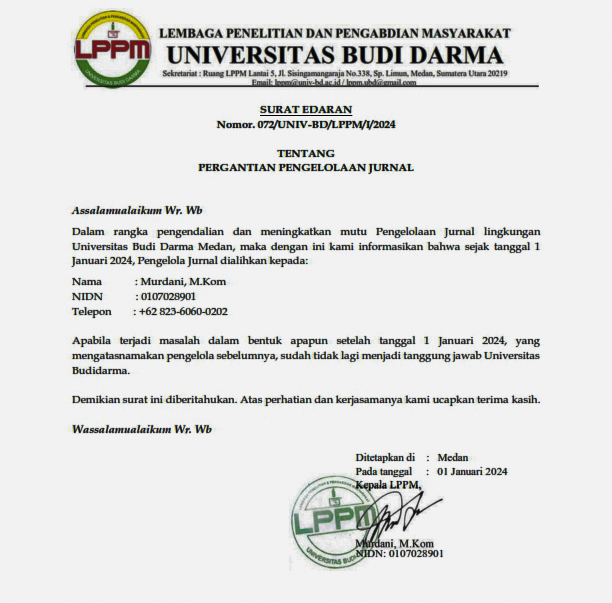Internet Data Consumption During Synchronous Teaching-from-Home Period at Sampoerna University
DOI:
https://doi.org/10.30865/json.v3i4.4121Keywords:
Synchronous, Teaching, Internet Quota, Data Consumptions, Learning Management System, Communication PlatformAbstract
Since the beginning of Covid-19 in Jakarta, synchronous teaching with Internet communication technology and asynchronous teaching supported by the Learning Management System (LMS) have been adopted at Sampoerna University (SU). Synchronous teaching that initially used a web-based conference technology was later changed to using a communication platform that the University has subscribed to. Lecturers were provided with 15GB (15,360MB) of data per month to support these teaching activities. This research aimed to analyze whether the Internet data quota provided by the Government was sufficient to support the teaching process during this research period. This research used a quantitative method, recorded primary data for three months, and descriptive data with non-probability sampling. It was discovered that only 9,281.34MB of data was being used (60.43%) and still had 6,078.66MB (39.57%) remaining. The conclusion that can be drawn was that the Internet quota provided by the Government was adequate to cover one month of synchronous teaching for three courses with three credits each.References
I. van der Spoel, O. Noroozi, E. Schuurink, and S. van Ginkel, “Teachers’ online teaching expectations and experiences during the Covid19-pandemic in the Netherlands,†European Journal of Teacher Education, vol. 43, no. 4, pp. 623–638, Aug. 2020, doi: 10.1080/02619768.2020.1821185.
R. N. Laili and M. Nashir, “Higher Education Students’ Perception on Online Learning during Covid-19 Pandemic,†EDUKATIF : JURNAL ILMU PENDIDIKAN, vol. 3, no. 3, Art. no. 3, Apr. 2021, doi: 10.31004/edukatif.v3i3.422.
N. Ndzinisa and R. Dlamini, “Responsiveness vs. accessibility: pandemic-driven shift to remote teaching and online learning,†Higher Education Research & Development, vol. 0, no. 0, pp. 1–16, Jan. 2022, doi: 10.1080/07294360.2021.2019199.
E. Wardoyo, “Pembelajaran Daring Sinkron dan Asinkron Produk Kreatif dan Kewirausahaan,†GURU BERBAGI. https://ayoguruberbagi.kemdikbud.go.id/artikel/pembelajaran-daring-kemasan-produk/ (accessed Mar. 15, 2022).
D. Gumanti, S. D. Teza, and R. Respita, “Analisis Implementasi Pembelajaran Luring Menjadi Daring Saat Pandemi Covid-19 Pada Mahasiswa Pendidikan Ekonomi Universitas Ekasakti,†Jurnal Pendidikan Ekonomi (JUPE), vol. 10, no. 1, Art. no. 1, 2022, doi: 10.26740/jupe.v10n1.p70-77.
J. Budiman, “EVALUASI PELAKSANAAN PEMBELAJARAN DARING DI INDONESIA SELAMA MASA PANDEMI COVID-19,†VOX EDUKASI: Jurnal Ilmiah Ilmu Pendidikan, vol. 12, no. 1, Art. no. 1, Apr. 2021, doi: 10.31932/ve.v12i1.1074.
Direktorat Jenderal Pendidikan Tinggi, “Bantuan Kuota Dikti.†https://kuotadikti.kemdikbud.go.id/ (accessed Mar. 15, 2022).
E. Budiman, “Decision Optimization: Internet Data Assistance for Students during Learning from Home,†International Journal of Innovative Technology and Exploring Engineering (IJITEE), vol. 9, no. 11, pp. 372–378, Sep. 2020, doi: 10.35940/ijitee.K7845.0991120.
E. Budiman, “Mobile Data Usage on Online Learning during COVID-19 Pandemic in Higher Education,†International Journal of Interactive Mobile Technologies (iJIM), vol. 14, no. 19, Art. no. 19, Nov. 2020, doi: 10.3991/ijim.v14i19.17499.
W. Wandy and M. A. C. Bhakti, “Analisis Konsumsi Internet pada Gim Battle Royale Berbasis Konsol Selama Periode Kenormalan Baru di Jakarta,†INTEK : Jurnal Informatika dan Teknologi Informasi, vol. 4, no. 1, Art. no. 1, May 2021, doi: 10.37729/intek.v4i1.1077.
M. A. C. Bhakti and W. Wandy, “Web Conference Internet Traffic Analysis during Study-from-Home Period: Case in Sampoerna University,†Indonesian Journal of Computing, Engineering and Design (IJoCED), vol. 2, no. 2, Art. no. 2, Oct. 2020, doi: 10.35806/ijoced.v2i2.116.
S. Dash, S. Samadder, A. Srivastava, R. Meena, and P. Ranjan, “Review of Online Teaching Platforms in the Current Period of COVID-19 Pandemic,†Indian J Surg, Jun. 2021, doi: 10.1007/s12262-021-02962-4.
S. Ojetunde, A. Ademidun, and T. Sangodoyin, “Online Learning Platforms’ Induced Education Inequalities and Special Education Students’ Learning Attitude during Covid-19 Pandemic Homestay in the University of Ibadan,†Journal of Education and Practice, vol. 12, no. 23, p. 61, 2021.
T. A. P. Dewi and A. Sadjiarto, “Pelaksanaan Pembelajaran Daring Pada Masa Pandemi Covid-19,†Jurnal Basicedu, vol. 5, no. 4, Art. no. 4, Jun. 2021.
Microsoft, “Introduction to Microsoft Teams,†Microsoft Educator Center. https://education.microsoft.com/en-us/resource/d5b62e3e (accessed Mar. 15, 2022).
K. N. Wea and A. D. Kuki, “Students’ Perceptions of Using Microsoft Teams Application in Online Learning During the Covid-19 Pandemic,†J. Phys.: Conf. Ser., vol. 1842, no. 1, p. 012016, Mar. 2021, doi: 10.1088/1742-6596/1842/1/012016.
A. R. Rojabi, “Exploring EFL Students’ Perception of Online Learning via Microsoft Teams: University Level in Indonesia,†English Language Teaching Educational Journal, vol. 3, no. 2, pp. 163–173, 2020.
Downloads
Published
How to Cite
Issue
Section
License

This work is licensed under a Creative Commons Attribution 4.0 International License
Authors who publish with this journal agree to the following terms:
- Authors retain copyright and grant the journal right of first publication with the work simultaneously licensed under Creative Commons Attribution 4.0 International License that allows others to share the work with an acknowledgment of the work's authorship and initial publication in this journal.
- Authors are able to enter into separate, additional contractual arrangements for the non-exclusive distribution of the journal's published version of the work (e.g., post it to an institutional repository or publish it in a book), with an acknowledgment of its initial publication in this journal.
- Authors are permitted and encouraged to post their work online (e.g., in institutional repositories or on their website) prior to and during the submission process, as it can lead to productive exchanges, as well as earlier and greater citation of published work (Refer to The Effect of Open Access).





